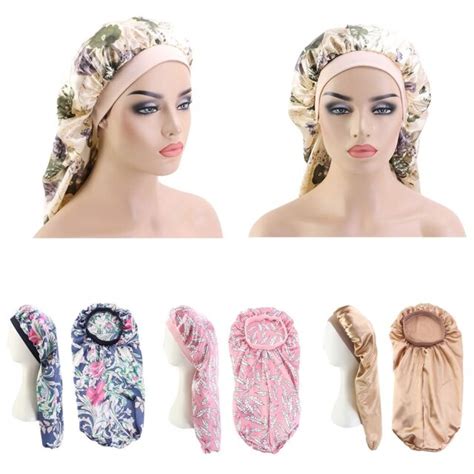Head Covers for Every Occasion
Head covers for women are not just religious or cultural necessities; they are versatile fashion accessories that can elevate any outfit. From elegant scarves to chic turbans, there is a head cover to suit every style and preference.

Types of Head Covers
Scarves: Available in various fabrics (silk, cotton, chiffon), scarves can be draped, wrapped, or tied around the head in endless ways. They add color, texture, and style.
Hijabs: Worn by Muslim women, hijabs cover the hair and neck while leaving the face visible. They come in diverse colors and patterns and offer modesty and elegance.
Turbans: Inspired by Middle Eastern and African cultures, turbans are head coverings made of fabric wrapped around the head. They create a sophisticated and stylish look.
Beanies: Knitted or crocheted beanies provide warmth and comfort. They are a staple winter accessory for casual wear or outdoor activities.
Fedoras: A classic fashion item, fedoras are wide-brimmed hats that add a touch of sophistication and mystery.
Benefits of Head Covers
- Protection: Head covers shield the scalp from sun, wind, and cold.
- Modesty: Certain head covers, such as hijabs, are worn for religious or cultural reasons to convey modesty and privacy.
- Style: Head covers are a versatile fashion statement that can complement any outfit.
- Hair Management: Head covers can conceal bad hair days or protect hairstyles from damage.
- Medical: Head covers are often used by cancer patients undergoing chemotherapy to cover hair loss.
5 Surprising Applications of Head Covers
Head Covers for Healthcare: Head covers made from antimicrobial fabrics can prevent the spread of infections in hospitals and clinics.
Head Covers for Sports: Sweat-wicking head covers keep athletes cool and dry during rigorous activities.
Head Covers for Travel: Head covers can protect hair from moisture, dust, and pollution while traveling.
Head Covers for Sleep: Silk head covers reduce friction and prevent hair breakage and tangles.
Head Covers for Hair Salons: Disposable head covers protect hair from chemicals and products during hair treatments.
Choosing the Right Head Cover
Consider your face shape: Round faces suit turbans and scarves with wider brims. Oval faces look good with most head covers. Square faces complement fedoras and scarves with angled edges.
Select the right fabric: Silk, cotton, and chiffon are breathable and comfortable. Wool and fleece offer warmth. Synthetic materials are durable and easy to care for.
Match your outfit: Choose head covers that complement the colors and patterns of your clothing. Scarves can add a pop of color or texture, while turbans can add a touch of sophistication.
How to Wear Head Covers
- Scarves: Drape the scarf over your head, tie it under your chin, or wrap it around your head like a headband.
- Hijabs: Pin the hijab in place under your chin and secure it over your head with a safety pin or magnetic clasp.
- Turbans: Wrap the fabric around your head, tucking in the ends to create a secure fit.
- Beanies: Pull the beanie over your head and adjust it to the desired fit.
- Fedoras: Place the fedora on your head at a slight angle and adjust it to the most flattering position.
Frequently Asked Questions
-
Can head covers damage my hair?
Not if they are made from breathable fabrics and worn properly. Silk head covers are particularly gentle on hair. -
What is the best way to wash head covers?
Follow the care instructions on the label. Some head covers can be machine-washed, while others require hand-washing. -
How do I style my hair with a head cover?
Pull your hair into a ponytail or bun before putting on a head cover. This will prevent hair from getting tangled or damaged. -
Can I wear head covers in all seasons?
Yes, there are head covers available for all seasons. Scarves and beanies are perfect for winter, while turbans and fedoras offer stylish options for summer. -
What types of head covers are suitable for different hair types?
Cotton head covers are ideal for oily hair, as they absorb excess moisture. Silk head covers are recommended for dry hair, as they reduce friction and prevent breakage. -
How can I find the right head cover for my face shape and personal style?
Experiment with different types of head covers and take inspiration from fashion blogs or magazines to find the ones that complement you best.
Conclusion
Head covers for women extend far beyond religious and cultural practices. They are versatile fashion accessories that can elevate any outfit, protect your hair and scalp, and make a statement about your personal style. With so many types and styles to choose from, there is sure to be a head cover that perfectly suits your needs and preferences. Embrace the transformative power of head covers and unlock a world of style and functionality.
